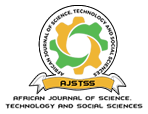Camel herding and commerce: adaptation for reducing poverty through camel meat value additions
DOI:
https://doi.org/10.58506/ajstss.v1i1.100Keywords:
Value additions, poverty reduction, adaptation, herding, commerceAbstract
Camel rearing among the pastoralist of Northern Kenya is both a socio-cultural and a livelihood phenomenon signifying perceived wealth and authority. This centuries old practice has otherwise enjoyed tranquility and serenity of its stature until various human, technical and environmental changes emerged in the recent years. The onset of climatic changes, marauding urbanization, schooling advances and alternative modern commerce is a beckoning realities to camel herding. The emergencies of these constraints is seemingly threating the camel herding practices in terms of socio-cultural significances, livelihood viability and sustainability as well as herding dividend. Consequently, this study attempts to navigate through the discourse around camel meat products value chains as a commercial adaptation towards improving camel pastoralists livelihoods. This enterprising approach is buttressed in transforming institutional, socio-psychological and technical interventions through research. The objective of the study is to validate viability of camel meat marketing value chains in order to improve camel herders dividend from camel rearing. The key result areas (KRAs) entails characterization of camel meat Value Chain Nods (VCNs), synergization and effectiveness for herders, marketers, butchers, processors and consumers focusing on meat cut, bones, nyirinyiri, fat and bone marrow. Descriptive research design employed PESTEL, SWOT and FIEST models for analyzing external, internal and sustainability variables respectively. Data collective tools were FGD (n=47), Interview (n= 47) and questionnaire (n=340) in Isiolo County. The focus of the validation is to understand current practices with a view of enhancing camel meat value addition, value modification and value optimization for stakeholders. Expected research output and outcomes are publications, learning and sharing dissemination workshop as well as poverty reduction, improved quality of life for camel herders and policy influencing.


